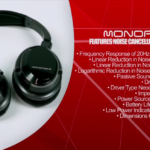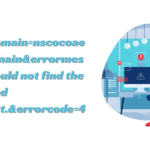Linear vs Switching AC to DC Converters: Which One Should You Choose?
- 1 Understanding the Basics: What Are Linear and Switching AC to DC Converters?
- 2 Key Advantages and Disadvantages of Linear Power Supplies
- 3 Why Choose Switching AC to DC Converter?
- 3.1 Advantages:
- 3.2 Cons:
- 4 How to Decide: Factors to Consider When Choosing Between Linear and Switching Converters
- 4.1 Application Needs:
- 4.2 Performance Demands:
- 4.3 Dimension and Area Constraints:
- 4.4 Budget Evaluation:
- 4.5 Sound and E:
- 5 Summarize
Selecting the suitable AC/DC converter may appear complicated, particularly when determining between linear vs switching converters. Each type of converter has its benefits and drawbacks, and understanding the distinctions between them is vital to making the optimal option based on your requirements. In this short article, I’ll clarify every little detail regarding direct and switched-over converters, contrasting the pros and cons of each so you can see which types of convert AC to DC power fit your needs much better. Whether you intend to run silently or successfully or discover a balance between the two, I’ll assist you in comprehending the variables to consider when selecting a converter. By the end of the post, it will be clear to you the types of AC to DC converters and choose a converter. Let’s get started!
Understanding the Basics: What Are Linear and Switching AC to DC Converters?
Linear converter:
This converter is like a power regulator, using transistors to control the voltage so that the device gets a stable direct current. They turn excess electricity into heat and keep the voltage from fluctuating. Because of its simple structure, it is very reliable and easy to use, especially for small equipment. They work quietly and have a stable voltage, making them suitable for powering sensitive devices that require precise voltage.
Switching converters:
These converters, also called SMPS, work differently. They use transistors and inductors that switch at high speeds to turn alternating current into direct current. This conversion is efficient and wastes almost no electricity. Switching converters can change the voltage and are used in many places, such as computer power supplies or large factory equipment.
In general, the linear converter is simple and accurate. Switching converters are efficient and versatile. With this in mind, you can pick the suitable converter for your needs.
Key Advantages and Disadvantages of Linear Power Supplies

The straight power supply is user-friendly, and troubleshooting is straightforward. Nevertheless, they create electromagnetic disturbance because of the absence of high-frequency buttons, impacting gadgets that call for noise-free surroundings. On the silver lining, the linear power supply provides stable and tidy voltage, making it ideal for gadgets with precise voltage needs.
Nevertheless, the negative aspect of straight power materials is that they are inefficient because they turn the extra electrical power into warmth to ensure that the electrical energy is lost. This is particularly real if you utilize it where you require a lot of electrical power or want to wait. The heat they produce as they function also makes the power source much heavier and may affect efficiency. Additionally, the straight power supply can only decrease the voltage and can not boost the voltage, so it is not appropriate for equipment that requires an increase in the voltage.
Why Choose Switching AC to DC Converter?
Advantages:
High efficiency: The switching converter uses less electricity, most of which can be converted into valuable electricity, so it is suitable for supplying power to equipment with large electricity consumption.
Small size: Because they don’t turn excess electricity into heat, they can be made very small, unlike some older, larger power supplies.
Flexible: The switching converter can adjust the voltage, which can be raised or lowered, so it can be used in many different places, such as powering laptops or large machines.
Cons:
Complexity: Changing converters is complicated and needs a cautious layout, utilizing high-frequency buttons and additional parts such as inductors and capacitors. This intricacy can make style, issue searching for, and upkeep tough.
Electromagnetic interference: Switching converters may emit electromagnetic interference during operation, affecting other electronic devices. Good shielding techniques and suitable filters can help reduce this interference.
Noise: Switching converters are generally reliable, but they can produce some electrical noise when operating, affecting devices sensitive to electrical signals.
How to Decide: Factors to Consider When Choosing Between Linear and Switching Converters
Application Needs:
Consider the one-of-a-kind demands of your application. If you require a consistent, silent outcome for delicate electronic devices, you may locate a straight converter that is more suitable. Conversely, a switching converter could be more appropriate for managing higher power degrees or compact arrangements.
Performance Demands:
Evaluate precisely how essential efficiency is for your application. For energy-sensitive or high-power applications, switching over converters provides much greater performance and less heat generation, which can be essential for system efficiency and expense financial savings.
Dimension and Area Constraints:
Switching converters are commonly the far better selection if you’re dealing with restricted space due to their compact size and effective warmth monitoring. Straight converters may call for more area because of their warmth dissipation demands.
Budget Evaluation:
While direct converters might seem more affordable initially, the general worth of a changing converter could be more significant when considering costs for extra cooling and prospective ineffectiveness, regardless of its higher first price.
Consider your ability to take care of complexity when picking between straight converters, which are easier to make, and switching converters, which require advanced layout methods and element selections.
Sound and E:
Direct converters may be preferable for applications that are especially vulnerable to electric interference because of their naturally reduced noise result. In contrast, changing reliability may demand additional style actions to alleviate electromagnetic interference.
Summarize
Choose between DC and switching power supplies based on your needs and critical factors such as efficiency, size, complexity, and noise. Linear power supplies are simple to use and suitable for low-power devices, but they are not efficient and heat up at work, so they are not ideal for all situations. The switching power supply has high efficiency, is small, and is suitable for high-power equipment or space-limited places. Still, their design is complex, and electromagnetic interference problems may exist.
You have to think about what your device needs based on the advantages and disadvantages of each power supply so that you can make a good choice. With the right power source, your device can get the power it needs, work well, and save money.
When deciding to convert AC to DC, it’s crucial to consider these factors to choose the most effective converter for your application.

















